arousal
1/13
There's no tags or description
Looks like no tags are added yet.
Name | Mastery | Learn | Test | Matching | Spaced |
|---|
No study sessions yet.
14 Terms
define arousal
the level of somatic or cognitive stimulation that gets us ready to perform
how can level of arousal be increased
by being watched
being in a challenging situation e.g. playing in a cup final
outline drive theory
as arousal increases, so does performance- this is a linear relationship
Performance = Drive x habit strength
Drive = the level of arousal/motivation.
Habit strength = how well a skill is learned (dominant response).
at high levels of arousal the performer reverts to their dominant response
if the performer is in the autonomous stage of learning then they will have a high level dominant response that is correct → performance level will be high
if the performer is in the cognitive stage of learning they are likely to have a low level dominant response that is incorrect → performance level will be low
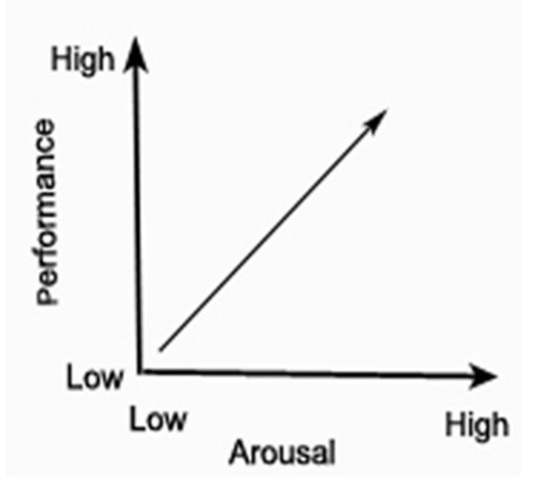
what is a dominant response
this is a well-learned skill that the performer will revert to in a high arousal situation
evaluate drive theory
Doesn’t explain performance drops – High arousal can lead to a decline in performance (better explained by the Inverted-U Theory or Catastrophe Theory).
Ignores individual differences – Different athletes respond to arousal differently depending on personality (introvert vs. extrovert)
Applies well to expert performers – Explains why elite athletes often perform better under high pressure (they have strong, correct dominant responses).
Describe the inverted-U theory
as arousal increases, so does performance but only up to an optimum point at moderate arousal
after the optimum point, any further increase in arousal will cause performance to decrease
over and under arousal can both be detrimental to performance
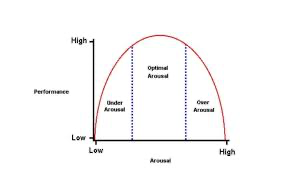
how does the inverted-U theory vary for different performers and skills
not all performers and skills operate best at moderate levels of arousal
optimum performance occurs best at low levels of arousal for:
cognitive stage of learning- need to concentrate on information as motor programmes haven’t already formed
introverts- high resting level of adrenaline (want high level)
fine skills
complex skills
optimum performance occurs best at high levels of arousal for:
autonomous stage of learning
extroverts- low resting level of adrenaline (want high level → increased due to increased arousal)
gross skills
simple skills
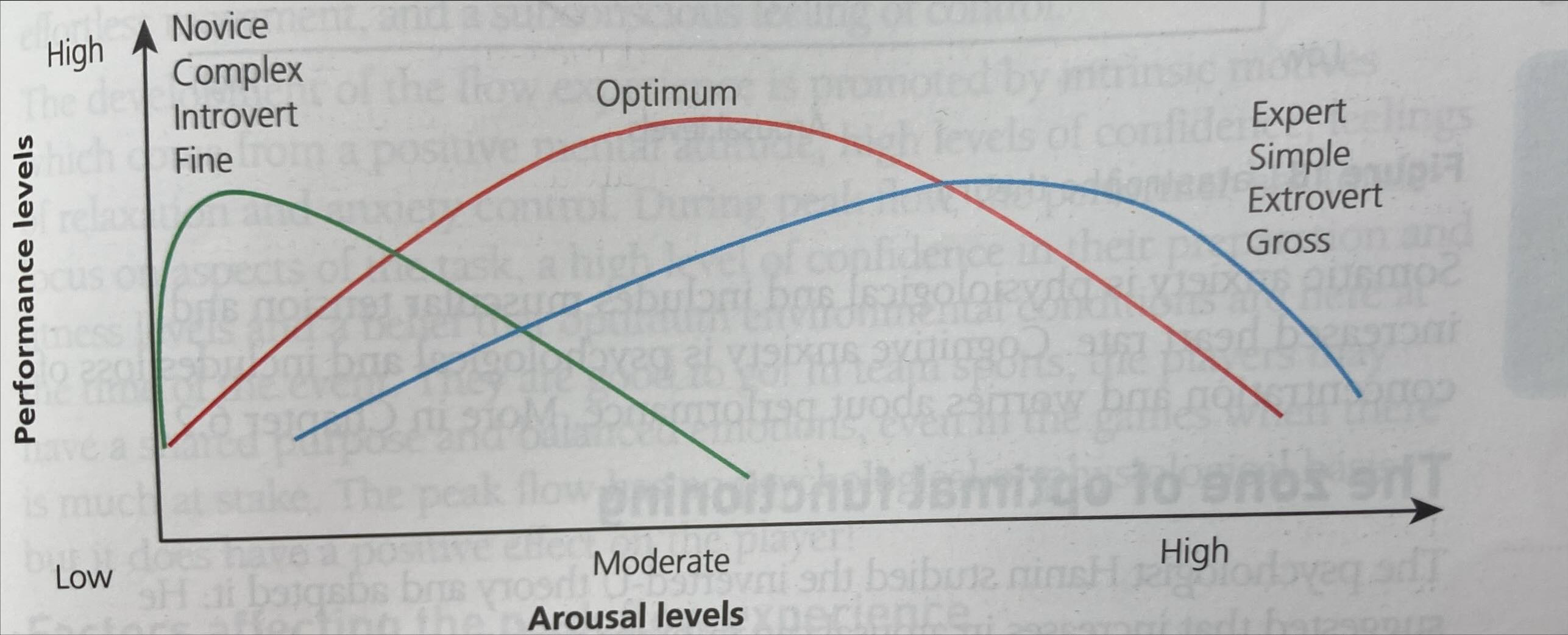
outline catastrophe theory
an adaptation of the inverted-U theory
as arousal increases, so does performance, up until an optimum point at moderate arousal
there is then a dramatic decrease in performance due to both high levels of cognitive and somatic anxiety
the effects can be reversed by performing relaxation techniques for both cognitive and somatic anxiety e.g. progressive muscular relaxation, deep breathing and centring, and imagery
the performer can then continue to play of they have reached a level of anxiety below the point of catastrophe (they need time and low initial level of anxiety)
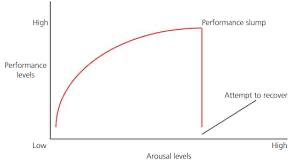
what is the zone of optimal functioning (Hanin)
ZOF suggests that each athlete has an individual optimal arousal zone for peak performance.
This zone is a range, not a single fixed point.
individuals use cognitive and somatic strategies to get them into the zone (at the right level of arousal)
When within the zone, performance is smooth, efficient, and effortless; outside the zone leads to underperformance.
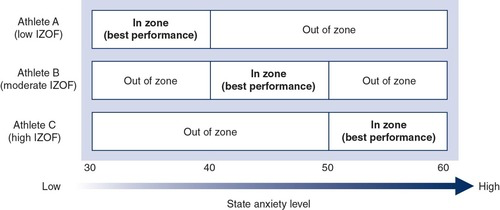
what are the characteristics of being in the ‘zone’
performing at optimum arousal levels
feeling completely calm
complete attentional control- fully focused on the task
performing smoothly, efficiently, and effortlessly
what is the peak flow experience
the ultimate positive psychological state for a performer
what are the characteristics of the peak flow experience
fully concentrated on the task
has absolute control over their actions
movement/performance seems effortless
there is a belief in your ability to succeed
when does the peak flow experience happen to a performer
the level of challenge they are presented with matches their skill level
the have the correct attentional style
they have a positive attitude before and during the skill (includes confidence and belief in ability)
they have control of their arousal levels
what can prevent a performer from entering the peak flow experience
being given a task that’s too easy → boredom
being given a task that’s too difficult → anxious and loss of confidence
poor mental preparation → high levels of physiological and somatic anxiety